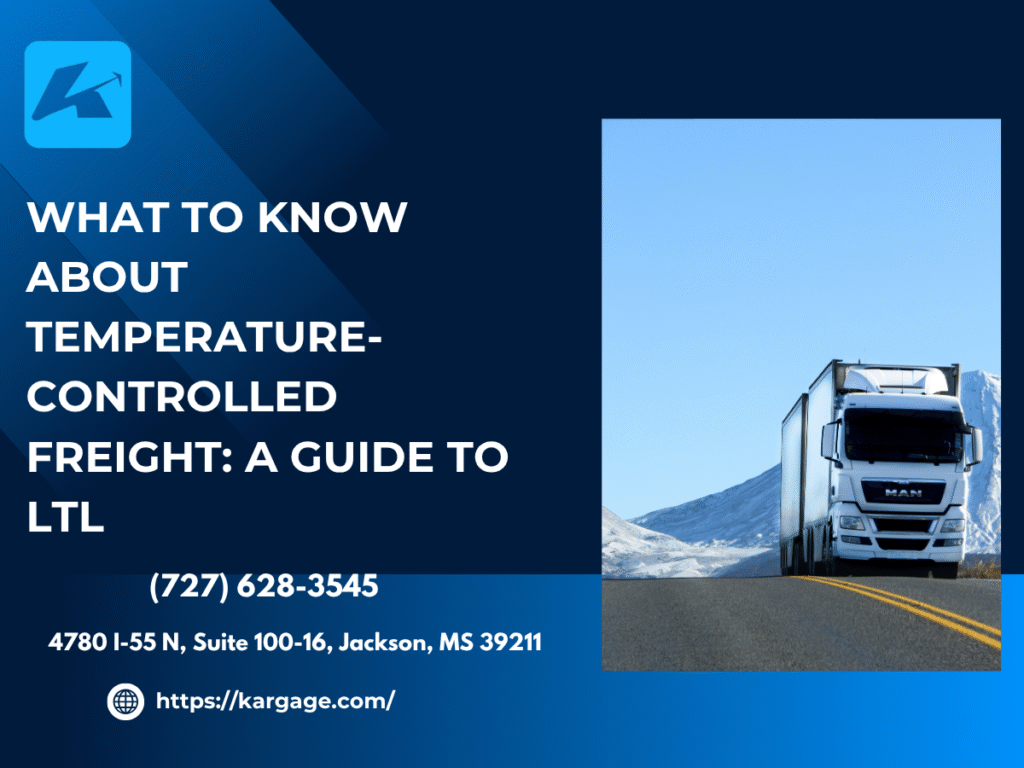Shipping temperature-sensitive goods—like fresh meat, vaccines, or ice cream—via Less Than Truckload (LTL) is no small feat. Unlike full truckload shipping, LTL means your freight shares space with other loads, making temperature control a delicate dance. Getting it right ensures your cargo arrives fresh and compliant.

Ready to dive into the world of refrigerated LTL shipping?
This guide shares five critical insights to help shippers master temperature-controlled freight and keep their goods in perfect condition.
1. Understand the Basics of Temperature-Controlled LTL
Temperature-controlled LTL shipping involves transporting goods that require specific temperatures—often refrigerated (32°F to 40°F) or frozen (0°F or below)—in a shared truck. This is ideal for smaller shipments, like a few pallets of produce or medical supplies, where a full truck isn’t cost-effective.
The catch? Multiple stops and handling increase the risk of temperature fluctuations. Carriers use refrigerated trailers (reefers) to maintain conditions, but shippers must plan carefully to avoid spoilage or regulatory issues.
Pro Tip: Know your cargo’s exact temperature range. For example, chocolate needs 55°F to 65°F, while frozen fish requires -10°F or lower.
2. Pick a Carrier with Reefer Expertise
Not every LTL carrier can handle temperature-controlled freight. You need one with specialized reefer trailers, trained staff, and experience in your cargo type, whether it’s dairy, pharmaceuticals, or frozen goods.
Ask about their equipment: Do reefers have dual-zone capabilities for mixed loads? Are there backup generators for power outages? Check their track record—carriers with robust temperature logs and compliance history are safer bets.
Kargage, based in Jackson, Mississippi, pairs shippers with LTL carriers skilled in refrigerated freight.
Action Step: Request the carrier’s reefer specs and proof of compliance with temperature-sensitive shipments before booking.
3. Package and Label for Protection
In LTL shipping, your freight faces handling at terminals and shares space with other loads, so packaging is crucial. Use insulated containers or pallets with thermal wraps to shield against heat or cold. For frozen cargo, consider dry ice or gel packs to maintain subzero conditions.
Ensure packages are stackable yet sturdy to avoid crushing. Label clearly with temperature instructions, like “Refrigerate at 35°F” or “Keep Frozen,” and include handling notes like “Do Not Stack.”
Proper packaging and labeling minimize risks during transit and terminal stops.
Quick Tip: Test your packaging in a lab or controlled setting to verify it holds the required temperature for the expected transit time.
4. Monitor Temperatures in Real Time
A temperature deviation can ruin a shipment, whether it’s spoiled fruit or ineffective medicine. Real-time monitoring is essential in LTL shipping, where multiple stops can expose cargo to risks like open trailer doors.
Use data loggers or IoT sensors to track temperature and humidity continuously. These tools send alerts if conditions shift, allowing quick fixes. Carriers should provide detailed temperature reports for compliance with regulations like the FDA’s Food Safety Modernization Act (FSMA).
Monitoring builds confidence and protects against losses.
Best Practice: Choose carriers with integrated monitoring tech. Ask for sample temperature logs to ensure they meet your audit needs.
5. Plan for Compliance and Insurance
Temperature-controlled freight often falls under strict rules. The FSMA requires documented temperature controls for food, while USP <1079> sets standards for pharmaceuticals. Non-compliance can mean fines, rejected loads, or legal headaches.
Understand your cargo’s regulatory needs and ensure carriers follow them. Protect your shipment with cargo insurance, as standard carrier liability may not cover temperature-related spoilage unless negligence is clear.

Kargage helps shippers align with compliant carriers, ensuring refrigerated LTL meets industry standards.
How to Start: Review FSMA or USP guidelines for your goods. Discuss insurance options with your broker to safeguard against temperature issues.
Putting It All Together
Temperature-controlled LTL shipping is a complex but manageable task. By understanding the basics, choosing expert carriers, packaging smartly, monitoring temperatures, and ensuring compliance, you can deliver your freight in top shape.
These steps aren’t just about avoiding spoilage—they’re about meeting customer expectations and staying regulatory-ready. At Kargage, we’ve seen how careful planning powers successful refrigerated shipments for our clients. But this isn’t about us—it’s about you.
Need to ship temperature-sensitive freight? Call us at (727) 628-3545 for a quote. With this guide, you’re ready to tackle LTL shipping with confidence.

